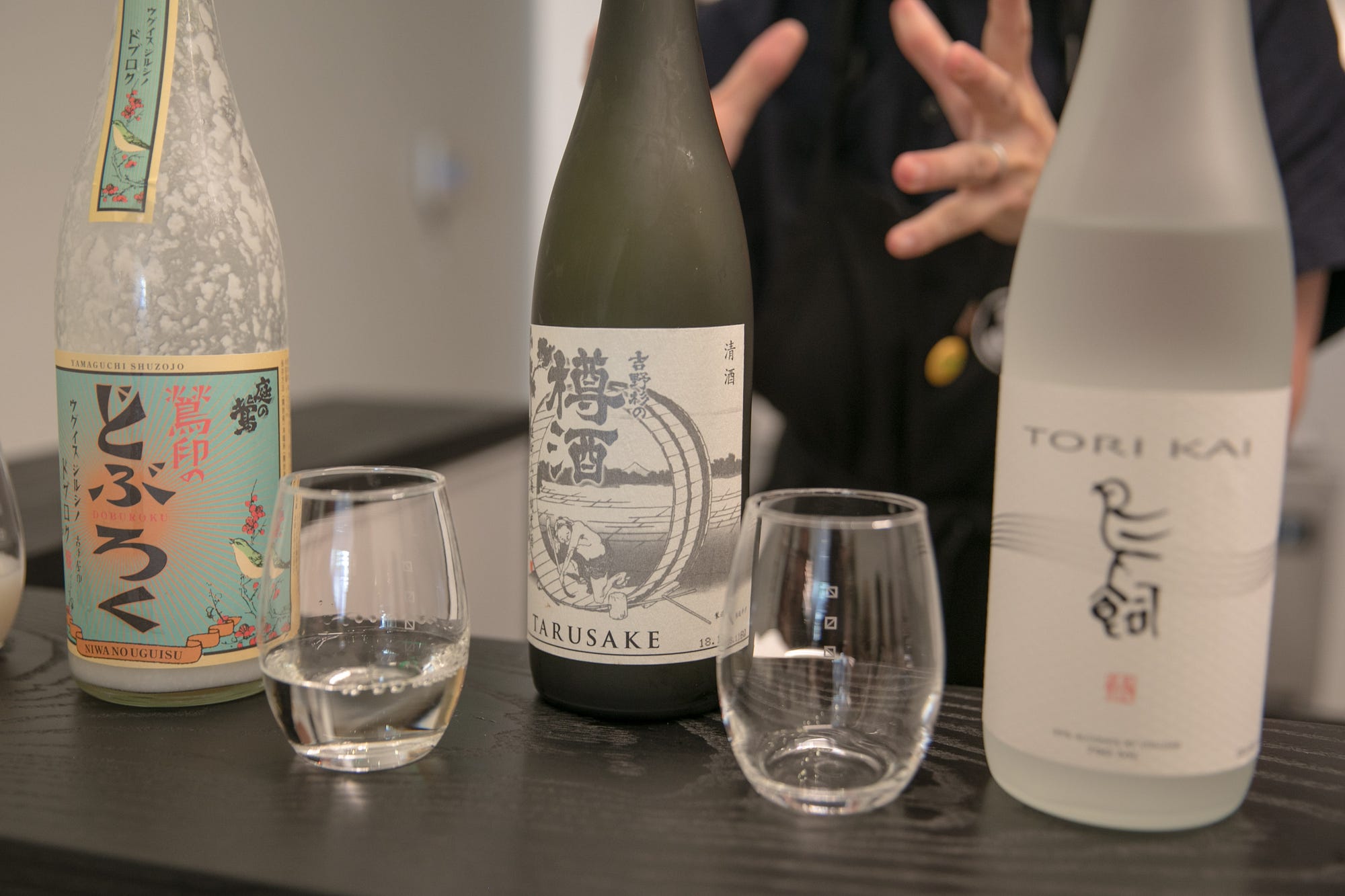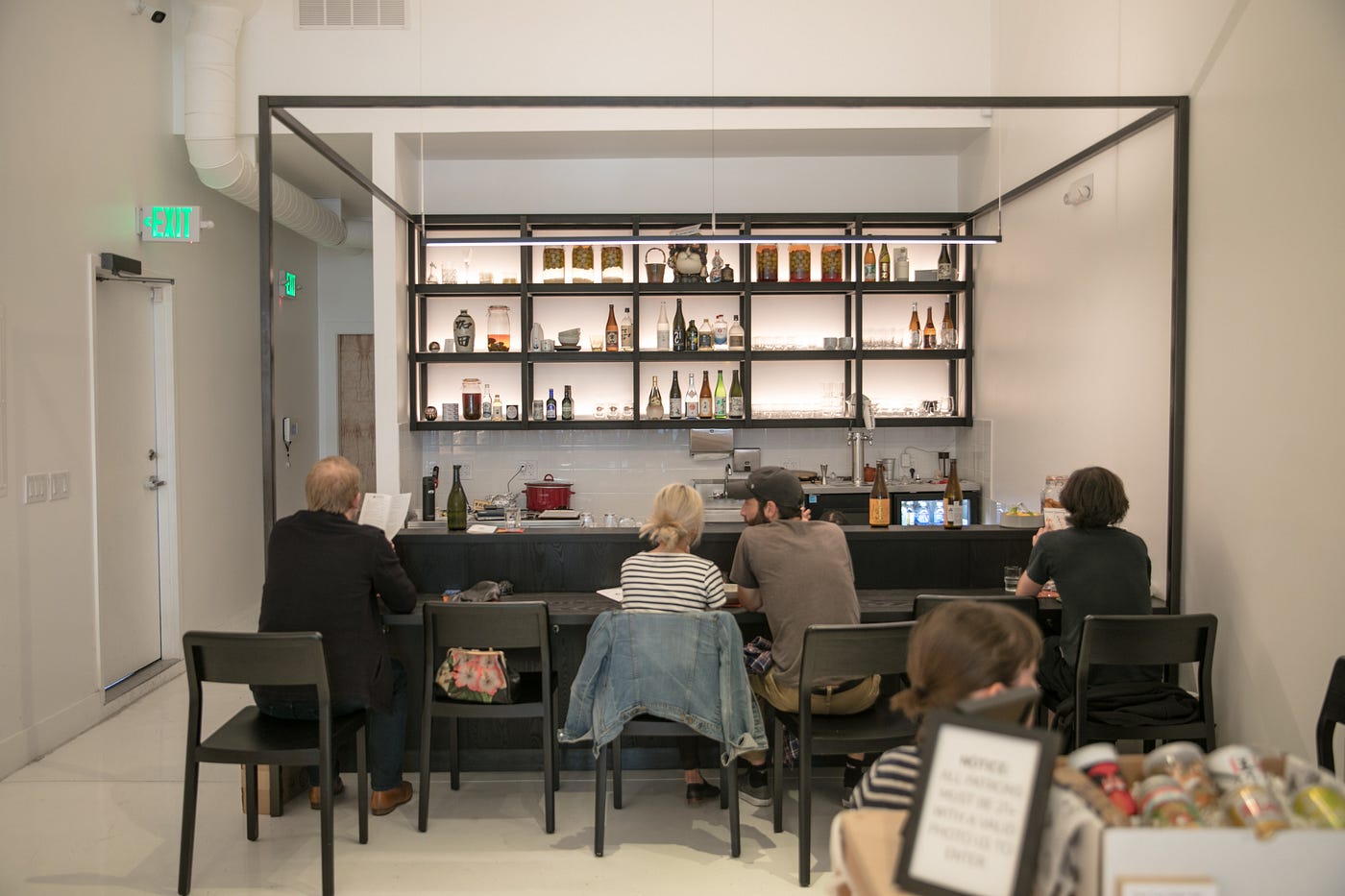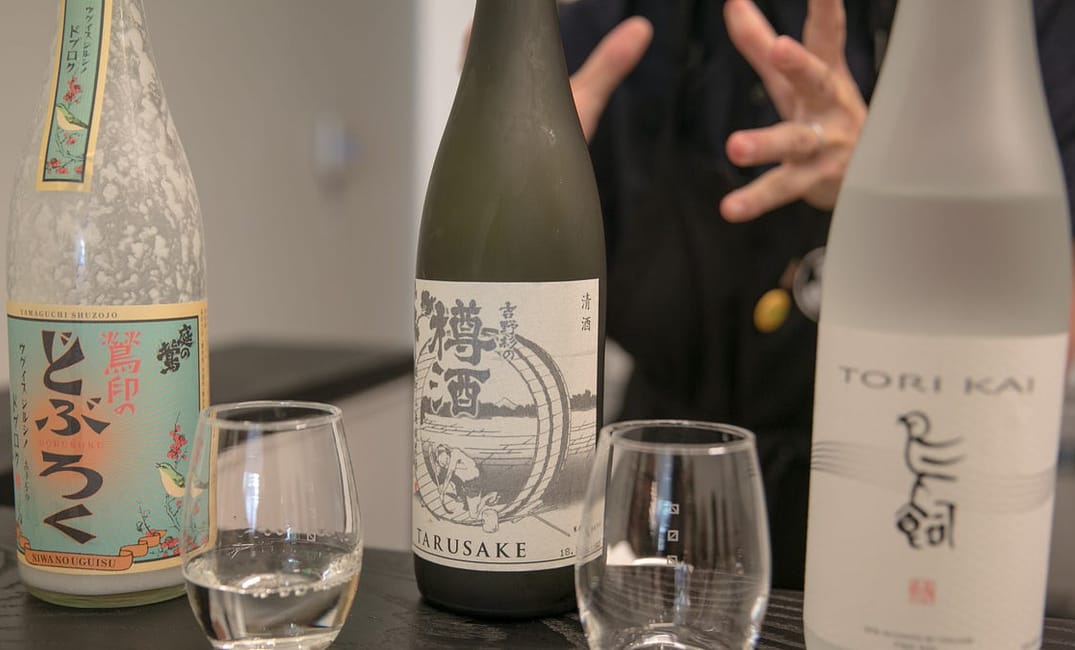
San Francisco is home to the original Japantown in America, and California has the only three remaining ones (also in San Jose and Los Angeles). These Japanese roots in the Bay Area have long meant dense communities and every manner of Japanese restaurant and cafe, down to recent iterations such as the World’s 50 Best ryokan-like farm/inn and fine-dining restaurant SingleThread in Healdsburg. San Francisco is also home to the U.S.’s first all-sake shop, True Sake, which opened in 2003.
It makes sense that the Bay Area would be ahead of the curve on shōchū, a lesser-known Japanese spirit that could be confused with sake. But shōchū is consumed significantly more in Japan than sake; in fact, Japanese whisky has been in shortage mode for years, driving prices way up and making bottles hard to get—another reason why Japanese-drink aficionados are turning to shōchū. Shōchū may never mainstream in the US, like whisky or gin has, but its geekdom growth has already started in the places where it usually does: San Francisco and New York City.
Like sake, which is achieving greater respect and understanding in recent years, shōchū features similar ingredients: koji (a mold used to initiate fermentation in sake, miso, and soy sauce — to name a few), water, and rice. But sake is brewed, and shōchū is distilled, with no additives allowed. To further complicate things, shōchū is made from a wide range of ingredients beyond just rice.
But what exactly is shōchū? It’s a distillate with an ABV (alcohol by volume) that can run from 20% to over 45%, making it either low-proof or robust, delicate or funky, earthy or starchy, bracing or soft. Flavor profiles also vary widely depending on its base ingredient. It can be distilled from rice, sweet potatoes, barley, buckwheat, brown sugar, and even carrots, chestnuts, sesame seeds, or shiso leaf.
While shōchū requires koji, there are three different kinds of of koji mold in shōchū, further changing the flavor profile: black (rich and bold), white (soft and muted), or yellow (fruity/citrus). With all these variables, is it any wonder that there’s often confusion about what shōchū is and how it tastes?
“I see that shōchū is now where sake was 15 years ago: little knowledge about the product and many misconceptions.”
Though shōchū is most commonly drunk neat, on the rocks, or with a bit of water in Japan, it shines in tea or cocktails from skilled bartenders. Chūhai, essentially a shōchū highball with soda, is such a common drink in Japan that it can also be found canned and in vending machines. As Kayoko Akabori of Oakland’s Umami Mart explains, “Shōchū is craft. Makers take a starch and distill it once, leaving a heavy influence on the flavors and complexities of the distillate.”
Shōchū has yet to become mainstream like more well-known Japanese drink exports: sake and Japanese whisky. But sake is a lower-proof “rice wine” rather than a spirit. Japanese whisky became highly coveted in the world’s cocktail bars the last few yeas, which has led to an unanticipated shortage. Big whisky producers like Suntory and Nikka are scrambling to catch up, aging larger volumes for the future. In the meantime, this has led to far higher prices and a scarcity of Japanese whiskies, making shōchū the more affordable and accessible Japanese spirit.
In cities like Los Angeles, San Francisco, and New York City, with large Japanese populations, bartenders have been playing with shōchū, and more than 100 brands are available in the U.S. market. Umami Mart’s Akabori confirms that it’s difficult to get new brands or interesting variations from producers that are already importing to the States: “Shōchū is typically only found at Japanese markets. Through more exposure at bars and restaurants, I think there is potential for a wider shōchū following. I see that shōchū is now where sake was 15 years ago: little knowledge about the product and many misconceptions. We hope to create a wider shōchū following through tastings and education at our bar.”
San Francisco’s Tsunami Panhandle is a shōchū trailblazer, having opened opening in 2001 and stocking over 100 different bottlings (different shōchū producers). They don’t make cocktails that showcase the ultimate craft and range of the category, but you can experience the spirit through flights and pours.
Some San Francisco bar greats have been playing with it for years, whether aging it in-house for classic cocktails, such as in 2014 at ICHI Sushi or at PCH (Pacific Cocktail Haven), where bartender Kevin Diedrich and his team mix shōchū with the likes of tahini and elderflower. At Gibson, Adam Chapman experiments with it in different ways, such as adding bold flavor and texture to a house cucumber-shiso-lemongrass kombucha with shōchū and koji yeast.

In Oakland in 2012, Akabori and Yoko Kumano opened Umami Mart, a Japanese barware and kitchenware shop. The clean lines of the shop and savvy collection of barware, kitchen products, and bottle selections made it one of the nation’s great Japanese drink shops. They stocked mostly sake in the early days, but after moving into their new Temescal location in 2019, they opened a small bar in the back that serves sake, shōchū, Japanese beer, and drinks made with all of the above. At the six-seat bar, you can get schooled on shōchū through flights or individual pours.
Because shōchū is now trendy in Japan, unexpected issues have risen, including a sweet-potato shortage and rising costs of premium brands. But it has also provoked folklore and myth. Japan’s Shigechiyo Izumi lived to be 105 years old, claiming that shōchū was part of his daily diet. He was quoted as saying, “Without shōchū, there would be no pleasure in life.”
Records of shōchū date back to the 16th century, and over the centuries, production techniques have morphed. It’s still often distilled once in a pot, which means the spirit retains more of its original base flavors, though water is commonly added post-distillation to bring the proof down and soften the flavor. It’s often matured from one to six months, most commonly in stainless-steel tanks, clay pots, or barrels. Other shōchūs go through maturation from six months to three years, while long-term maturation extends past three years.
The sweet-savory Ookubo Shuzo shōchū was interesting; instead of the usual steamed sweet-potato base, it’s distilled from baked sweet potato, a rare one-off in the spirit that tastes like fall with toasty, comforting warmth.
Another sign that shōchū is on the rise is recent events held in SF and NYC by the Japan External Trade Organization (JETRO) that provide shōchū education with cocktails, seminars, producers, and importers from all over Japan. As I tasted through a wide array of shōchūs at their SF event, I was disappointed to find that with many brands, their “entry level” — or softest and subtle — shōchū was the only one imported to the States. The funkier versions seem to be available only in Japan.
But as I tasted with bartenders from across the Bay Area, I was excited by the diversity. For longtime rhum agricole lovers like myself (and people who love funky rums, oxidized wines, and the like), Nanaki Gold’s barrel-aged shōchū from Japan’s Amami Islands has a sugar-cane base and a subtle funk that recalls rhum agricole.
Moving on, I tasted the sweet-potato-based Daiyame, a classic example of a sweet-potato shōchū with floral whispers. The sweet-savory Ookubo Shuzo shōchū was interesting; instead of the usual steamed sweet-potato base, it’s distilled from baked sweet potato, a rare one-off in the spirit that tastes like fall with toasty, comforting warmth.
If you crave umami flavors, like I do, the special-edition Fau 2018 shōchū wowed with umami complexity and fresh fruit. I found the standout for most hip packaging to be Mizu Shōchū; they feel geared toward a younger Western audience with English labels and colorful packaging as well as flavored iterations that are actually quality, like a subtle lemongrass or green-tea shōchū.
It’s easy to get jaded in the beverage industry when you’ve been in it as long as I have. During the last 20 years, I’ve tasted hundreds of thousands spirits from around the world in distilleries and bars. My radar perks up when I discover that a category I once found “one note” or straightforward isn’t so simple. As I see unique shōchū bars pop up outside of Japan, I’m not surprised to see San Francisco as a trailblazer (per usual), with Tsunami Panhandle pouring a deep catalog for nearly two decades.
Across the world, in Singapore, RPM by D. Bespoke is one of the great new shōchū bars in the world, an example of just how cool and approachable a shōchū bar can be. The house vinyl collection, chill vibe, and vintage speakers are a draw alone. But then you notice the extensive shōchū collection and only a few Japanese whiskies. Glance through the cocktail menu, and you’ll find shōchū tasting flights, shōchū highballs and smoothies, and crushable sippers, such as the AKA Shiso Fizz, which contains shōchū, fresh red shiso juice, lemon, and soda. This is the kind of bar that predates what’s to come to the Bay.







